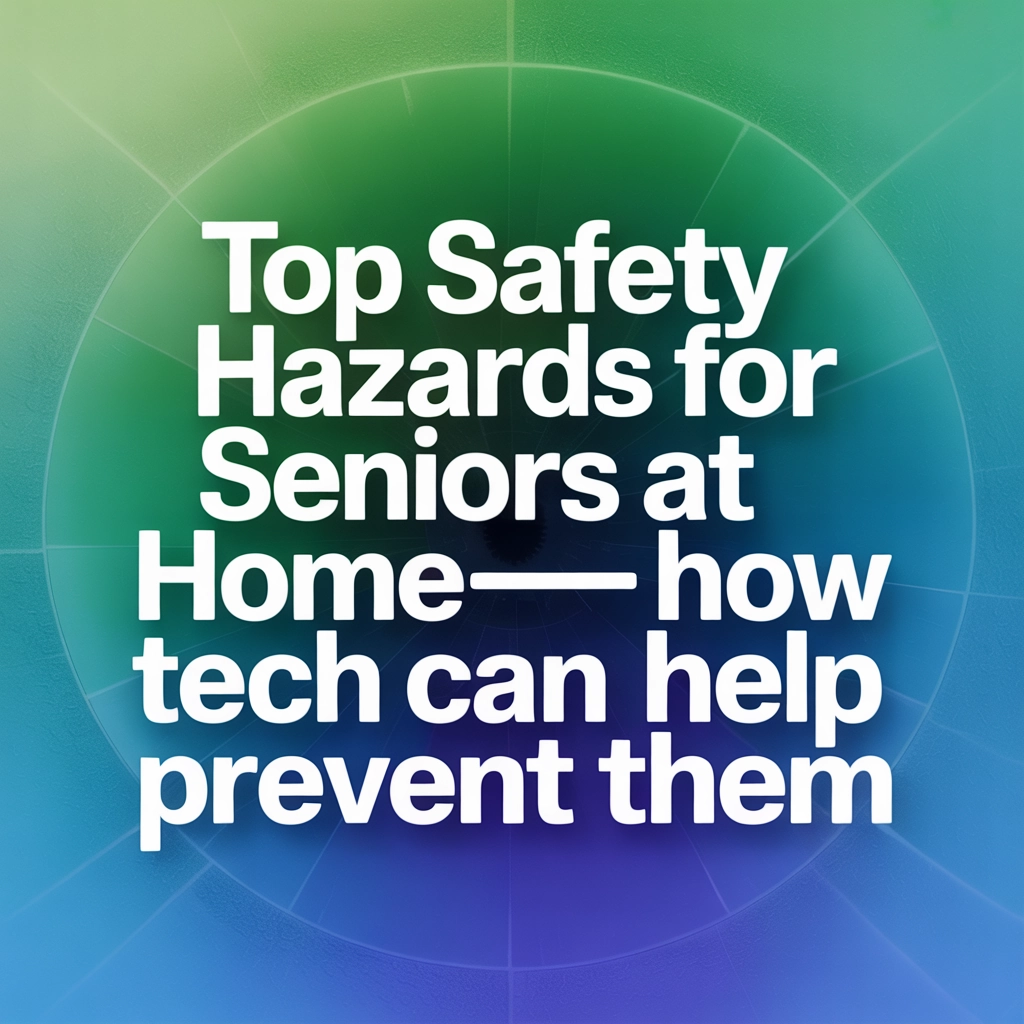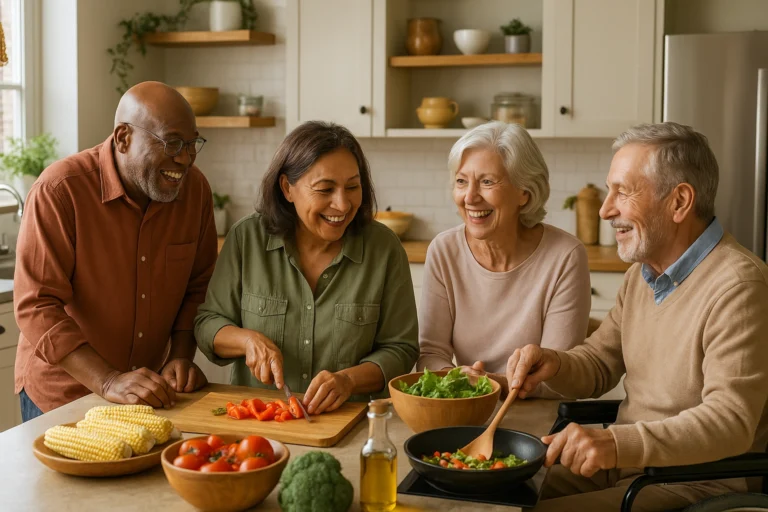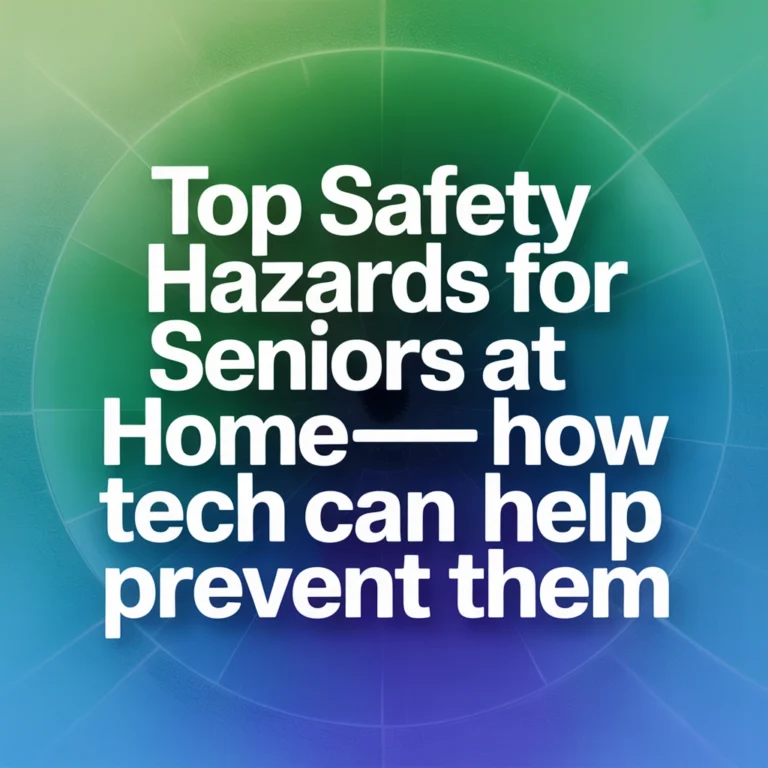For millions of older adults, home isn't just where the heart is—it's where they want to stay as they age. Yet what makes home comfortable can sometimes pose hidden risks. According to the CDC, one in four Americans aged 65+ falls each year, and the home is where 60% of senior falls occur.
The good news? Today's technology offers innovative solutions that can dramatically reduce these risks without sacrificing independence. Let's explore the most common safety hazards seniors face at home and the smart tech solutions that can help prevent them.
1. Falls: The #1 Safety Concern for Seniors
Falls remain the leading cause of injury and injury-related death among older adults. They often result from a combination of factors including:
- Slippery floors, especially in bathrooms
- Poor lighting in hallways and stairwells
- Loose rugs or electrical cords
- Cluttered walking paths
- Balance or mobility challenges
- Side effects from medications
Prevention Tips:
- Install grab bars in bathrooms, particularly near toilets and in showers
- Secure all rugs with non-slip backing or tape
- Improve lighting, especially in stairwells and hallways
- Remove clutter from walking paths
- Consider a first-floor bedroom to minimize stair use
- Wear proper footwear with non-slip soles
Tech Solutions for Fall Prevention:
Modern technology offers remarkable ways to both prevent falls and provide quick assistance when they do occur.
Smart Lighting Systems: Motion-activated lights ensure pathways are illuminated whenever someone walks through, eliminating the need to search for light switches in the dark.
Wearable Fall Detection Devices: Smartwatches and pendants can detect falls and automatically call for help. The Apple Watch Series 9 includes fall detection that can call emergency services and notify emergency contacts.
SeniorThrive's Proactive Fall Prevention: Unlike reactive systems that only help after a fall occurs, the SeniorThrive app uses advanced technology to help detect risk factors and prevent falls before they happen. Our system analyzes movement patterns to identify changes that might indicate increased fall risk, allowing for intervention before an accident occurs.
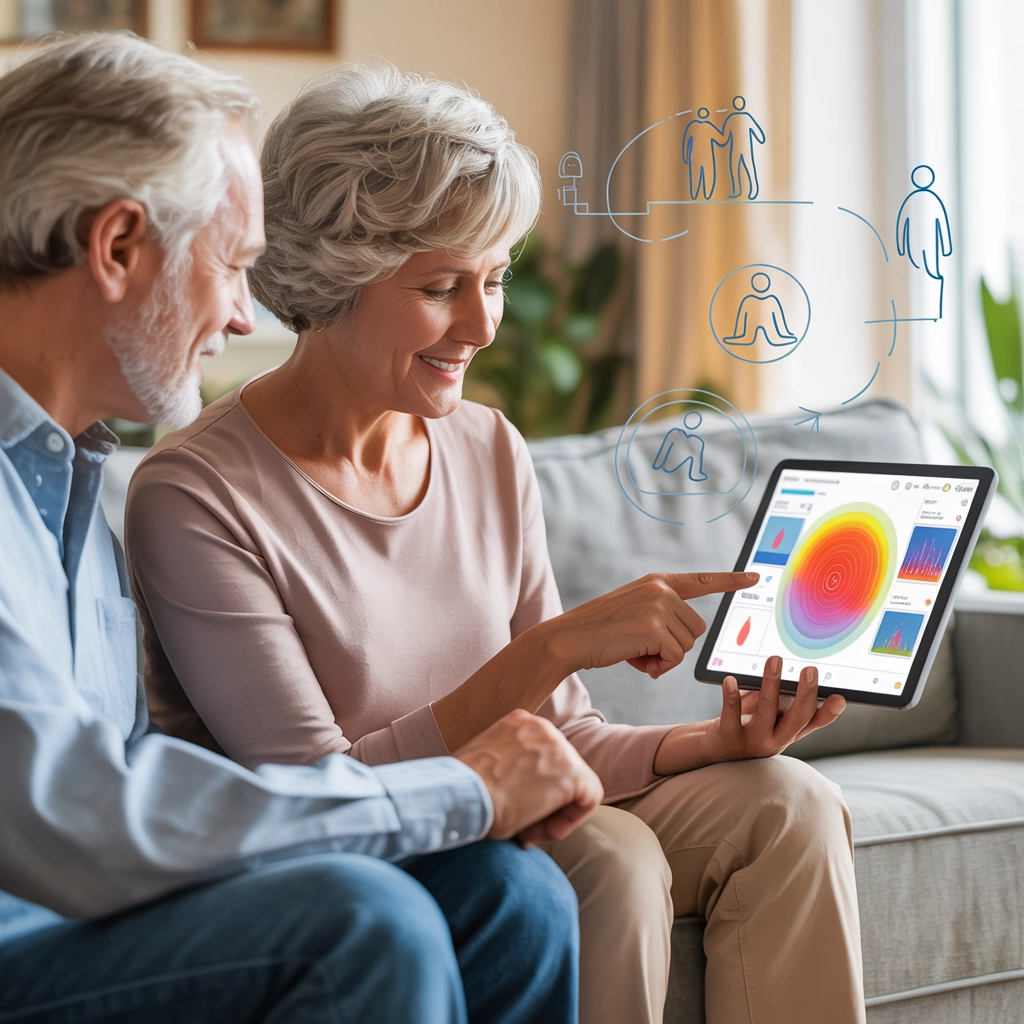
2. Fire Hazards: Small Risks with Serious Consequences
Seniors are at higher risk during home fires due to potential mobility limitations, hearing impairments that might prevent them from hearing alarms, and sometimes forgetting to turn off appliances.
Common Fire Hazards:
- Unattended cooking
- Space heaters placed too close to flammable items
- Overloaded electrical outlets
- Smoking in bed or while drowsy
- Candles left burning
Prevention Tips:
- Never leave cooking unattended
- Keep a 3-foot clearance around heating equipment
- Check and clean dryer lint traps regularly
- Avoid extension cord use for major appliances
- Consider flameless LED candles instead of traditional ones
Tech Solutions for Fire Prevention:
Smart Smoke and Carbon Monoxide Detectors: The Google Nest Protect not only sounds an alarm but speaks to tell you exactly what and where the problem is. It also sends alerts to smartphones.
Smart Stove Monitors: Devices like automatic stove shut-off systems can detect when a stove has been left on too long and turn it off.
Connected Home Systems: Smart home hubs can remind seniors about potential hazards, such as turning off the oven or unplugging space heaters before bedtime.
3. Medication Management Challenges
For seniors taking multiple medications, keeping track of doses, times, and instructions can be overwhelming. Medication errors can lead to serious health complications, including dizziness that increases fall risk.
Common Medication Hazards:
- Missing doses
- Taking double doses due to memory lapses
- Mixing medications that shouldn't be combined
- Taking medications at incorrect times
- Running out of essential prescriptions
Prevention Tips:
- Create a written medication schedule
- Use pill organizers sorted by day and time
- Set alarms as reminders for medication times
- Keep a current list of all medications, including over-the-counter drugs
- Review all medications with a doctor or pharmacist annually
Tech Solutions for Medication Management:
Automatic Pill Dispensers: The MedMinder Automatic Pill Dispenser locks and unlocks compartments at pre-programmed times, dispensing only the pills needed at that specific time.
Medication Reminder Apps: Many apps provide customizable reminders and tracking.
SeniorThrive's Medication Tracker: Our app includes a comprehensive medication management system that not only reminds users when to take medications but also tracks adherence patterns and can share this information with caregivers and healthcare providers. This integrated approach helps prevent dangerous medication errors and ensures that healthcare teams have accurate information about medication compliance.
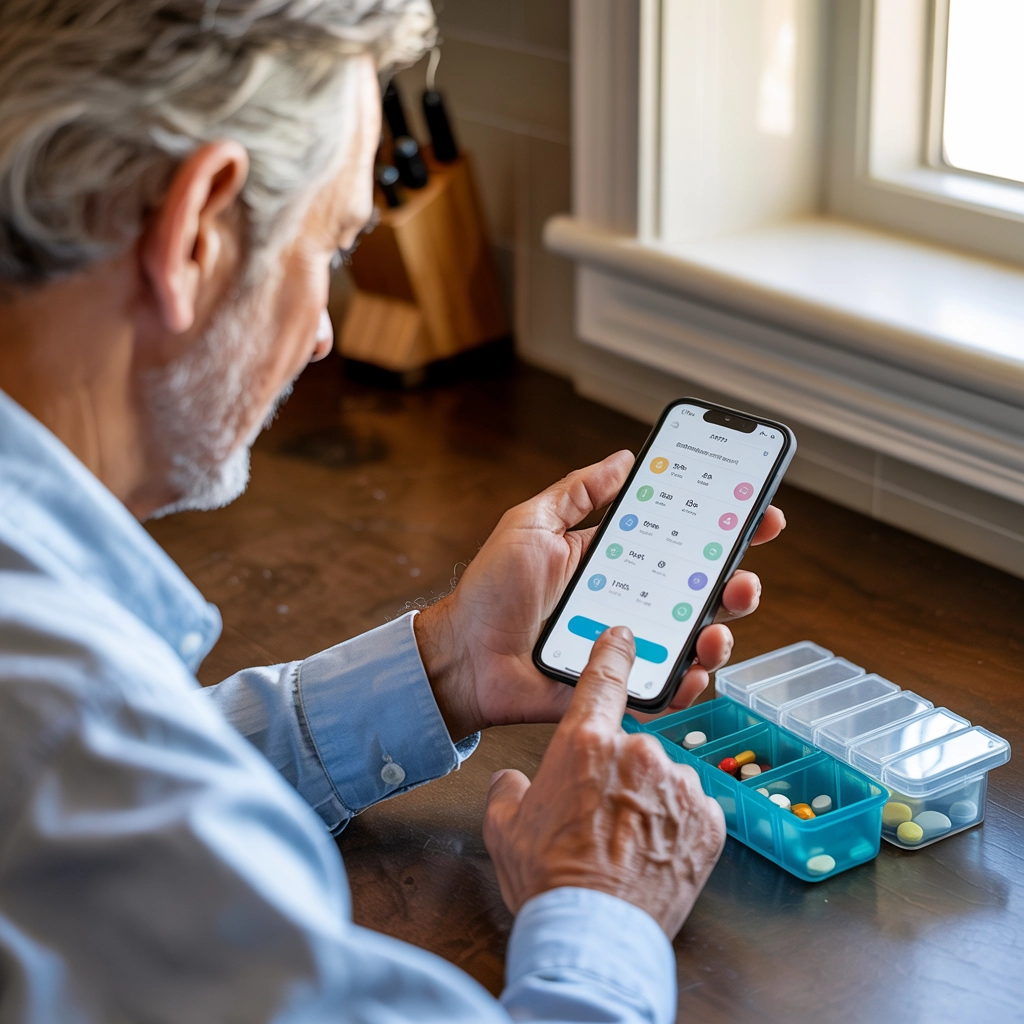
4. Bathroom Safety Issues
Bathrooms combine several risk factors: slippery surfaces, hard fixtures, and activities requiring balance. It's no surprise that nearly 80% of falls at home happen in the bathroom.
Common Bathroom Hazards:
- Slippery floors, especially when wet
- Getting in and out of the tub or shower
- Inadequate support when sitting down or standing up from the toilet
- Poor lighting
- Scalding water
Prevention Tips:
- Install grab bars by the toilet and in the shower/tub area
- Use non-slip mats in the tub and on bathroom floors
- Consider a shower chair or bench
- Install a raised toilet seat with handles
- Set water heater temperature to 120°F or lower to prevent scalding
Tech Solutions for Bathroom Safety:
Motion-Sensor Faucets: These eliminate the need to manipulate small knobs and help prevent both scalding and flooding.
Smart Bathroom Lighting: Motion-activated night lights provide illumination without requiring seniors to search for switches in the dark.
Bathroom Monitoring Systems: Non-intrusive sensors can detect unusual activity patterns (like someone falling or remaining on the floor) without compromising privacy.
5. Kitchen Safety Concerns
The kitchen combines sharp objects, hot surfaces, and potential fire hazards, making it another high-risk area for seniors.
Common Kitchen Hazards:
- Reaching for high shelves
- Handling sharp knives or tools
- Lifting heavy pots and appliances
- Forgetting about food cooking on the stove
- Difficulty opening packaging or containers
Prevention Tips:
- Reorganize cabinets to keep frequently used items at waist level
- Use lightweight cookware
- Install pull-out shelves to eliminate the need to reach into deep cabinets
- Consider electric kettles with automatic shut-off instead of stovetop options
- Use jar openers and other adaptive kitchen tools
Tech Solutions for Kitchen Safety:
Smart Appliances: Induction cooktops that only heat when a pot is present and shut off automatically after a set time reduce fire risks.
Voice-Activated Assistants: Devices like Amazon Echo or Google Home can set timers, create shopping lists, and even control smart appliances without requiring seniors to move around the kitchen.
Refrigerator Cameras: These allow seniors (and caregivers) to check what's in the fridge without standing for long periods with the door open.
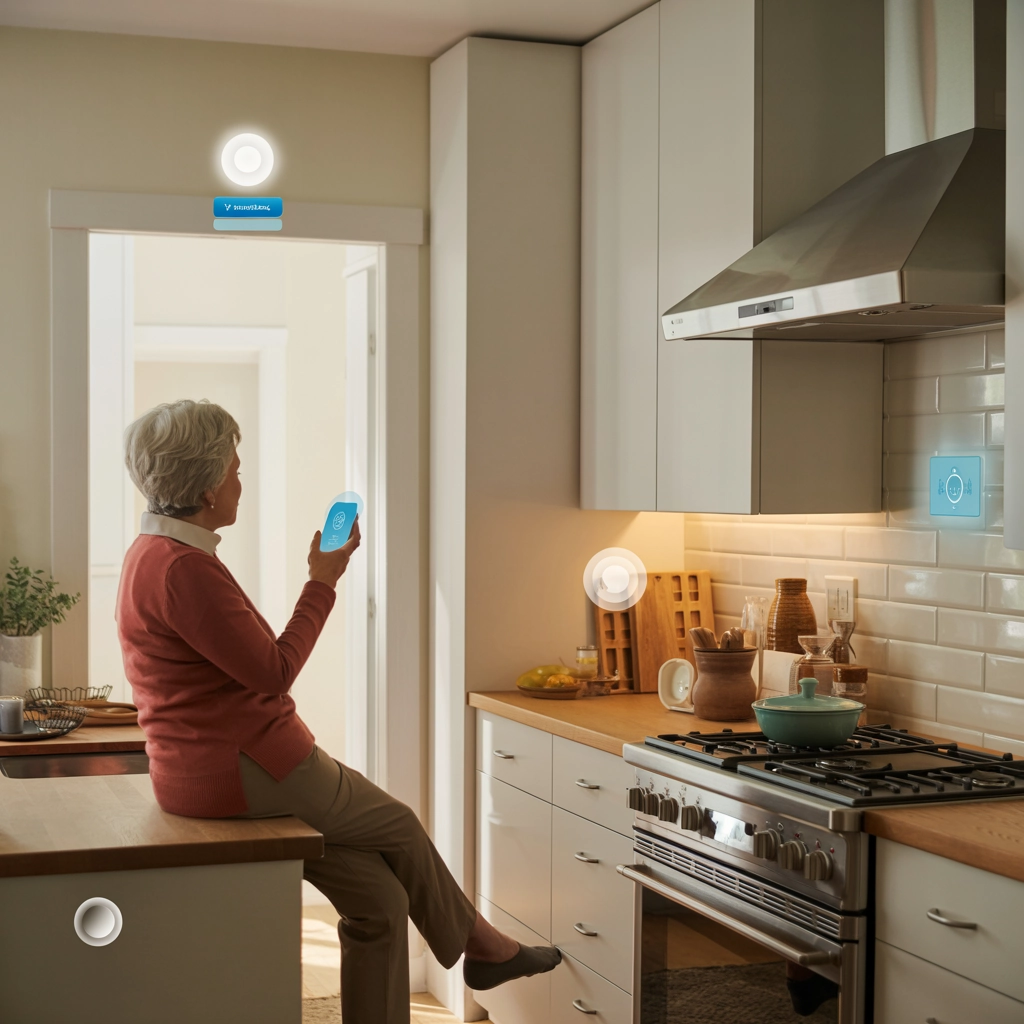
Bringing It All Together: The Power of Connected Care
While individual safety products are helpful, the real magic happens when these solutions work together as part of a connected care ecosystem. This is where platforms like SeniorThrive truly shine.
SeniorThrive integrates multiple safety features into one user-friendly app:
- Proactive fall risk assessment and prevention
- Medication management and reminders
- Activity monitoring that respects privacy
- Easy communication with caregivers and family
- Emergency alert capabilities
This comprehensive approach means that instead of managing multiple disconnected devices and apps, seniors and their caregivers have one central hub for monitoring safety and wellbeing.
Taking Action: Your Safety Checklist
Ready to make a home safer? Start with these steps:
-
Conduct a home safety assessment: Walk through each room looking specifically for the hazards mentioned above.
-
Prioritize modifications: Address the most serious risks first, particularly in high-traffic areas and bathrooms.
-
Incorporate technology thoughtfully: Choose solutions that address specific needs and are user-friendly.
-
Create a support network: Make sure neighbors, friends, and family members know how they can help in an emergency.
-
Consider a comprehensive solution: Platforms like SeniorThrive combine multiple safety features in one easy-to-use system.
Remember, the goal isn't just to prevent accidents—it's to create an environment where seniors can thrive independently with confidence and peace of mind.
Looking for more tips on supporting aging loved ones? Explore our blog for resources on everything from technology tutorials to caregiving strategies.
This post contains affiliate links, meaning we may receive a small commission from qualifying purchases at no additional cost to you.

